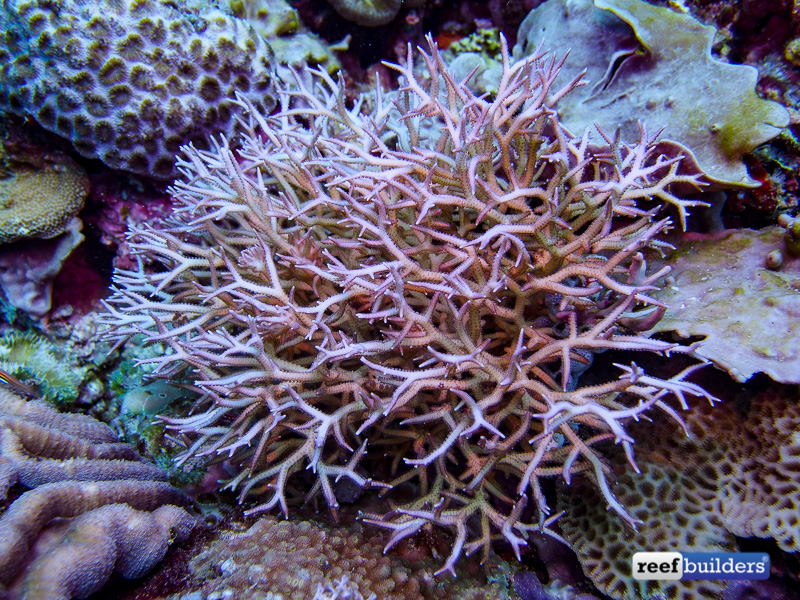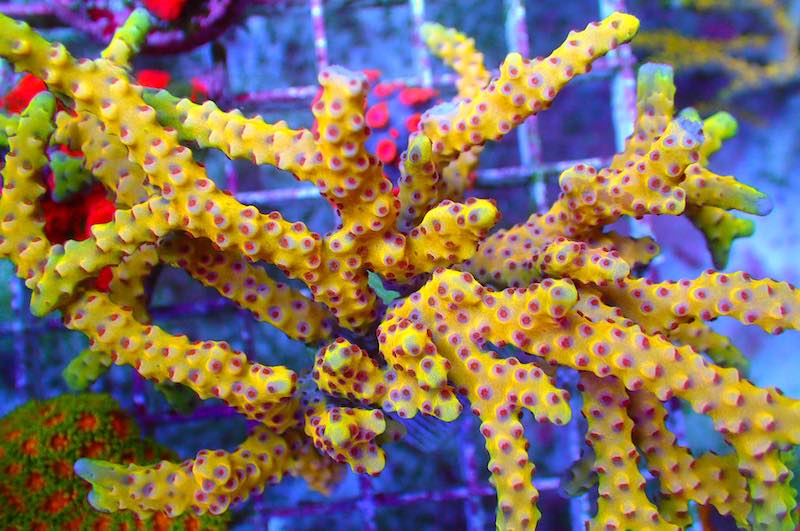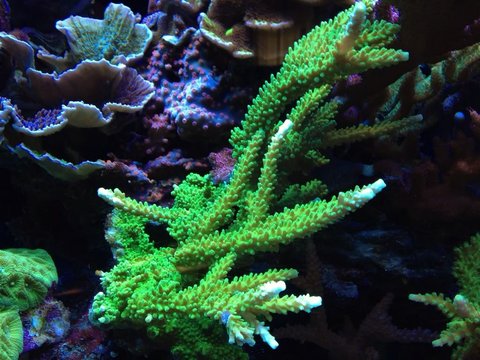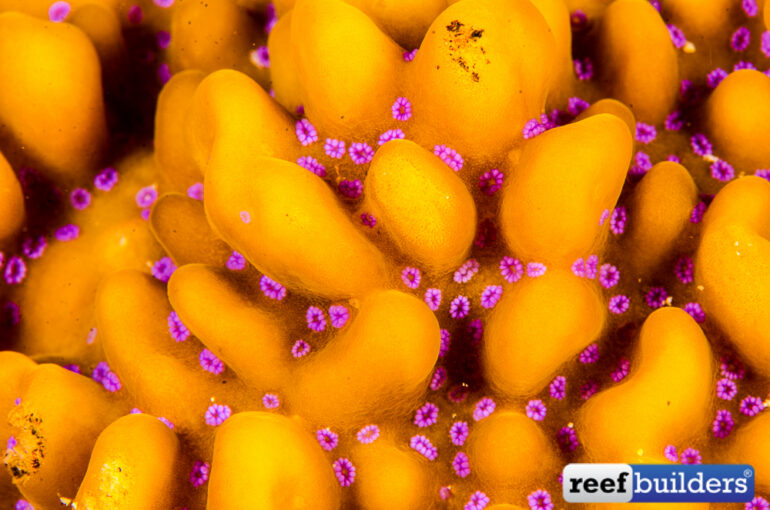Small Polyp Stony Corals are some of the most popular aquarium corals, and the most populous on natural reefs, famed for their spiky branches, flat tables, or swirling plates.
Not all SPS corals are the same, however, or as easy to keep as one another. In the case of the kings of SPS, the Acropora genus, their care can even differ through growth form and species. Here are the SPS genera and species we recommend budding hard coral reefers try out first.
Stylophora spp.
The Stylo is probably the first SPS coral we recommend people try when dipping their toes for the first time, and by far the most abundant in reef stores is the purple “Milka” Stylo, Stylophora pistillata. Its provenance reaches all the way back to Dr. Jean Jaubert, the Monaco Aquarium and before that, the Red Sea. This coral is many, many generations cultured in aquariums, thriving under metal halide, T5, and latterly LED lights, as well as enduring the full gamete of all the different forms of buffering and supplementations we’ve exposed our reef tanks to over the decades.
This makes it a very hardy branching SPS, tolerant of shifting parameters, light and flow, while still offering a fast-growing, tight, branching form and either blue or purple coloration. Even some of the best SPS aquariums still use its form and color in their displays, but don’t expect much, if anything in monetary value, when trying to get rid of its excess growth.

Seriatopora spp.
Commonly referred to as bird’s nests, Seriatopora has thin branches, sometimes rounded, sometimes pointy and needle-like, and before blue lighting was a thing, a bright pink bird’s nest coral would stand out in many tanks. Since blue LED lighting, the pink has been washed out while other color variants like Bird of Paradise have taken its place.
Like Stylophora, Seriatopora is hardy, fast-growing, and tolerant of many types of light, flow, nutrient levels, and supplementation. It can grow so tight that it can shade out its lower branches, and will appreciate stronger flow as it grows too. It often loses out when touched by the powerful sting of LPS corals, and a whole colony can strip if stung. Don’t expect to get a lot of trade-in value either as many stores of full of it, but again, if new to SPS, it’s a top five recommended SPS coral.

Montipora spp.
Aquarists keep three main types of Montipora – plating, branching, and encrusting, with the fast-growing, swirling, and plating Monitpora capricornis, or “Monti Cap,” being the most popular. Available in many shades of green, orange, and purple, plating montis offer an instant hard coral reef look to a tank, and are good for space filling and consuming buffers, for those who crave some extra consumption. “Digis,” Montipora digitata, are also available in both green and orange forms, with “Bubble Gum” and “Forest Fire,” being very bright and popular, as well as the orange/red Montipora setosa. Keep Montis, Stylos, and Birds nests together and you will have an easy to achieve Small Polyp Stony Coral aquarium without any of the hassles of Acropora.

Anacropora spp.
Anacropora, or sea rods, may often be overlooked as frags, but they don’t need the bright like that Acropora needs or the extra care. They actually come in many forms but the popular ones are bright green, or a fetching luminous yellow. They can be placed lower down in SPS tanks and when grown out, a branching colony is still worthy of its place. We wish we saw more of them.

Acropora spp.
With 150 described species, and possibly double that in existence, Acropora care and culture represent the pinnacle of the reefing hobby for many, but claiming many casualties on the way. As a sweeping generalization, Acropora inhabit the cleanest, purest, clearest, highest flow, and most brightly lit areas of reef, and they are not tolerant of water parameters that are subject to change or fluctuation, punishing mistakes by bleaching, stripping their flesh, and leaving a bare skeleton within just 24 hours.
With so many species, however, and growth forms, some are easier to keep than others. The best one to search for is the “Bali Green Slimer,” Acropora yongei, a branching or arborescent Acropora which has been in the hobby for decades. The branching staghorn corals seem easier than the coveted corymbose species like A.millepora, and their open form makes them easier to light, get flow to, and even treat for Acropora-eating flatworms. Look out for the popular “Tort,” too, Acropora tortuosa. A favorite in the Reef Builders Studio.
Others to try include the hispidose bottle brush Acropora, and smooth skin or deep water acros, both of which are tolerant of less light and seemingly less prone to AEFW. Long-term cultured frags of any acro species are far hardier than recently imported wild or maricultured, so that’s the place we recommend a beginner to Acros should start.




